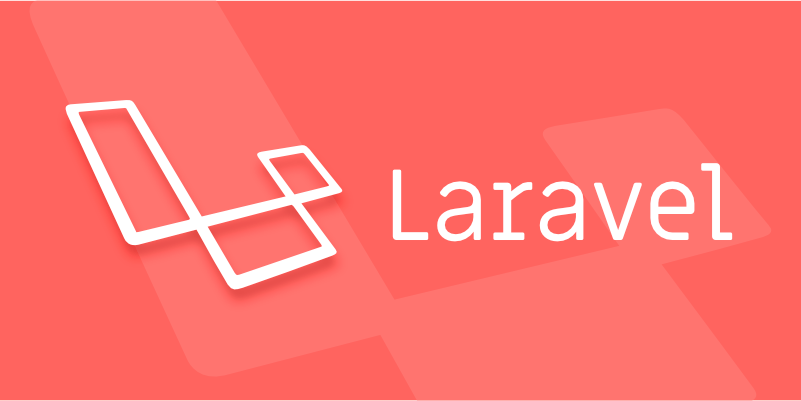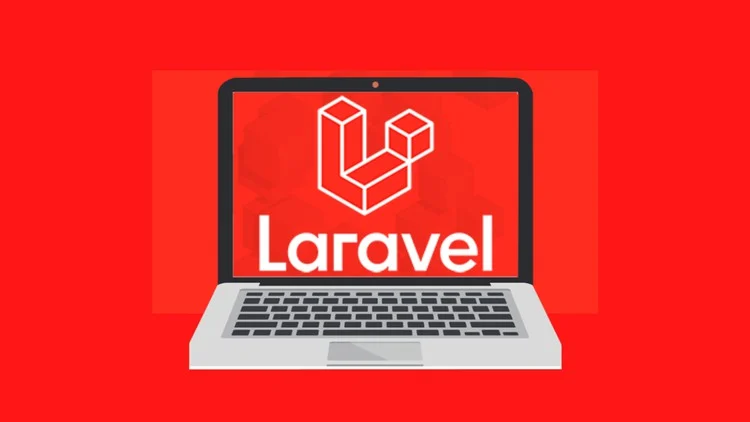Configure email settings, 2. Create Mailable classes, 3. Create mail templates, 4. Send emails, 5. Optionally use queues to improve performance; first set MAIL_MAILER, MAIL_HOST and other information in .env to configure email drivers. It is recommended that the development environment use Mailtrap or log driver to avoid missends, and then use php artisan make:mail WelcomeEmail generates the Mailable class and defines the topic and views in the build method. Then creates a Blade template in resources/views/emails/welcome.blade.php and displays dynamic content using variables. Then send emails through Mail::to()->send() in the route or controller. Supports multiple recipients of cc and bcc. To improve performance, you can use Mail::to()->queue() to queue processing. Make sure that QUEUE_CONNECTION is configured. Finally, when you encounter problems, run php artisan config:clear to clear the cache, and verify the email content by viewing laravel.log. The entire process is clear and efficient, making it easier to smoothly transition from the development environment to the production environment.

Sending emails in Laravel is straightforward thanks to its built-in mail system, which supports drivers like SMTP, Mailgun, Amazon SES, and more. Here's how to send an email using Laravel:

1. Configure Mail Settings
First, set up your mail configuration in the .env file. Laravel uses this to determine how to send emails.
MAIL_MAILER=smtp
MAIL_HOST=smtp.mailtrap.io
MAIL_PORT=2525
MAIL_USERNAME=your_username
MAIL_PASSWORD=your_password
MAIL_ENCRYPTION=tls
MAIL_FROM_ADDRESS="from@example.com"
MAIL_FROM_NAME="${APP_NAME}"Tip: Use Mailtrap for testing in development so emails don't go to real users.
2. Create a Mailable Class
Use Artisan to generate a mailable class:
php artisan make:mail WelcomeEmail
This creates a file in app/Mail/WelcomeEmail.php .

Edit it to define the email content:
<?php
namespace App\Mail;
use Illuminate\Bus\Queueable;
use Illuminate\Mail\Mailable;
use Illuminate\Queue\SerializesModels;
class WelcomeEmail extends Mailable
{
use Queueable, SerializesModels;
public $user;
public function __construct($user)
{
$this->user = $user;
}
public function build()
{
return $this->subject('Welcome to Our App')
->view('emails.welcome');
}
}3. Create the Email Template
Create a Blade view for the email at resources/views/emails/welcome.blade.php :
<!DOCTYPE html>
<html>
<head>
<title>Welcome</title>
</head>
<body>
<h1>Welcome, {{ $user->name }}!</h1>
<p>Thank you for joining our platform.</p>
</body>
</html>4. Send the Email
Now send the email from a controller or route:
use App\Mail\WelcomeEmail;
use App\Models\User;
use Illuminate\Support\Facades\Mail;
Route::get('/send-email', function () {
$user = User::first();
Mail::to($user->email)->send(new WelcomeEmail($user));
return 'Email sent!';
});You can also send to multiple recipients:
Mail::to('admin@example.com')
->cc('manager@example.com')
->bcc('owner@example.com')
->send(new WelcomeEmail($user));5. Optional: Queue Emails for Better Performance
To avoid slowing down requests, queue the email:
use Illuminate\Support\Facades\Mail; Mail::to($user->email)->queue(new WelcomeEmail($user));
Or force immediately sending without queue:
Mail::to($user->email)->sendNow(new WelcomeEmail($user));
Make sure your queue driver is set up (eg, database , redis ) in .env :
QUEUE_CONNECTION=database
Common Issues & Tips
- Clear config cache: After changing
.env, runphp artisan config:clear. - Test in development: Use
logdriver to avoid sending real emails:MAIL_MAILER=log
- Verify email content: Check
storage/logs/laravel.logif usinglogdriver.
Basically, Laravel makes email sending clean and flexible—just configure, create a Mailable, design a view, and send. With queues and drivers, it scales well from dev to production.
The above is the detailed content of How to send email with Laravel?. For more information, please follow other related articles on the PHP Chinese website!

Hot AI Tools

Undress AI Tool
Undress images for free

Undresser.AI Undress
AI-powered app for creating realistic nude photos

AI Clothes Remover
Online AI tool for removing clothes from photos.

Clothoff.io
AI clothes remover

Video Face Swap
Swap faces in any video effortlessly with our completely free AI face swap tool!

Hot Article

Hot Tools

Notepad++7.3.1
Easy-to-use and free code editor

SublimeText3 Chinese version
Chinese version, very easy to use

Zend Studio 13.0.1
Powerful PHP integrated development environment

Dreamweaver CS6
Visual web development tools

SublimeText3 Mac version
God-level code editing software (SublimeText3)

Hot Topics
 Creating Custom Validation Rules in a Laravel Project
Jul 04, 2025 am 01:03 AM
Creating Custom Validation Rules in a Laravel Project
Jul 04, 2025 am 01:03 AM
There are three ways to add custom validation rules in Laravel: using closures, Rule classes, and form requests. 1. Use closures to be suitable for lightweight verification, such as preventing the user name "admin"; 2. Create Rule classes (such as ValidUsernameRule) to make complex logic clearer and maintainable; 3. Integrate multiple rules in form requests and centrally manage verification logic. At the same time, you can set prompts through custom messages methods or incoming error message arrays to improve flexibility and maintainability.
 Adding multilingual support to a Laravel application
Jul 03, 2025 am 01:17 AM
Adding multilingual support to a Laravel application
Jul 03, 2025 am 01:17 AM
The core methods for Laravel applications to implement multilingual support include: setting language files, dynamic language switching, translation URL routing, and managing translation keys in Blade templates. First, organize the strings of each language in the corresponding folders (such as en, es, fr) in the /resources/lang directory, and define the translation content by returning the associative array; 2. Translate the key value through the \_\_() helper function call, and use App::setLocale() to combine session or routing parameters to realize language switching; 3. For translation URLs, paths can be defined for different languages ??through prefixed routing groups, or route alias in language files dynamically mapped; 4. Keep the translation keys concise and
 Working with pivot tables in Laravel Many-to-Many relationships
Jul 07, 2025 am 01:06 AM
Working with pivot tables in Laravel Many-to-Many relationships
Jul 07, 2025 am 01:06 AM
ToworkeffectivelywithpivottablesinLaravel,firstaccesspivotdatausingwithPivot()orwithTimestamps(),thenupdateentrieswithupdateExistingPivot(),managerelationshipsviadetach()andsync(),andusecustompivotmodelswhenneeded.1.UsewithPivot()toincludespecificcol
 Sending different types of notifications with Laravel
Jul 06, 2025 am 12:52 AM
Sending different types of notifications with Laravel
Jul 06, 2025 am 12:52 AM
Laravelprovidesacleanandflexiblewaytosendnotificationsviamultiplechannelslikeemail,SMS,in-appalerts,andpushnotifications.Youdefinenotificationchannelsinthevia()methodofanotificationclass,andimplementspecificmethodsliketoMail(),toDatabase(),ortoVonage
 Understanding and creating custom Service Providers in Laravel
Jul 03, 2025 am 01:35 AM
Understanding and creating custom Service Providers in Laravel
Jul 03, 2025 am 01:35 AM
ServiceProvider is the core mechanism used in the Laravel framework for registering services and initializing logic. You can create a custom ServiceProvider through the Artisan command; 1. The register method is used to bind services, register singletons, set aliases, etc., and other services that have not yet been loaded cannot be called; 2. The boot method runs after all services are registered and is used to register event listeners, view synthesizers, middleware and other logic that depends on other services; common uses include binding interfaces and implementations, registering Facades, loading configurations, registering command-line instructions and view components; it is recommended to centralize relevant bindings to a ServiceProvider to manage, and pay attention to registration
 Understanding Dependency Injection in Laravel?
Jul 05, 2025 am 02:01 AM
Understanding Dependency Injection in Laravel?
Jul 05, 2025 am 02:01 AM
Dependency injection automatically handles class dependencies through service containers in Laravel without manual new objects. Its core is constructor injection and method injection, such as automatically passing in the Request instance in the controller. Laravel parses dependencies through type prompts and recursively creates the required objects. The binding interface and implementation can be used by the service provider to use the bind method, or singleton to bind a singleton. When using it, you need to ensure type prompts, avoid constructor complications, use context bindings with caution, and understand automatic parsing rules. Mastering these can improve code flexibility and maintenance.
 Strategies for optimizing Laravel application performance
Jul 09, 2025 am 03:00 AM
Strategies for optimizing Laravel application performance
Jul 09, 2025 am 03:00 AM
Laravel performance optimization can improve application efficiency through four core directions. 1. Use the cache mechanism to reduce duplicate queries, store infrequently changing data through Cache::remember() and other methods to reduce database access frequency; 2. Optimize database from the model to query statements, avoid N 1 queries, specifying field queries, adding indexes, paging processing and reading and writing separation, and reduce bottlenecks; 3. Use time-consuming operations such as email sending and file exporting to queue asynchronous processing, use Supervisor to manage workers and set up retry mechanisms; 4. Use middleware and service providers reasonably to avoid complex logic and unnecessary initialization code, and delay loading of services to improve startup efficiency.
 Managing database state for testing in Laravel
Jul 13, 2025 am 03:08 AM
Managing database state for testing in Laravel
Jul 13, 2025 am 03:08 AM
Methods to manage database state in Laravel tests include using RefreshDatabase, selective seeding of data, careful use of transactions, and manual cleaning if necessary. 1. Use RefreshDatabasetrait to automatically migrate the database structure to ensure that each test is based on a clean database; 2. Use specific seeds to fill the necessary data and generate dynamic data in combination with the model factory; 3. Use DatabaseTransactionstrait to roll back the test changes, but pay attention to its limitations; 4. Manually truncate the table or reseed the database when it cannot be automatically cleaned. These methods are flexibly selected according to the type of test and environment to ensure the reliability and efficiency of the test.






